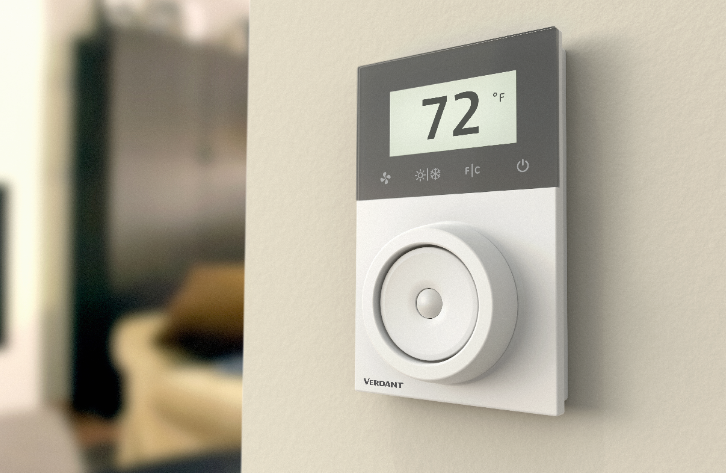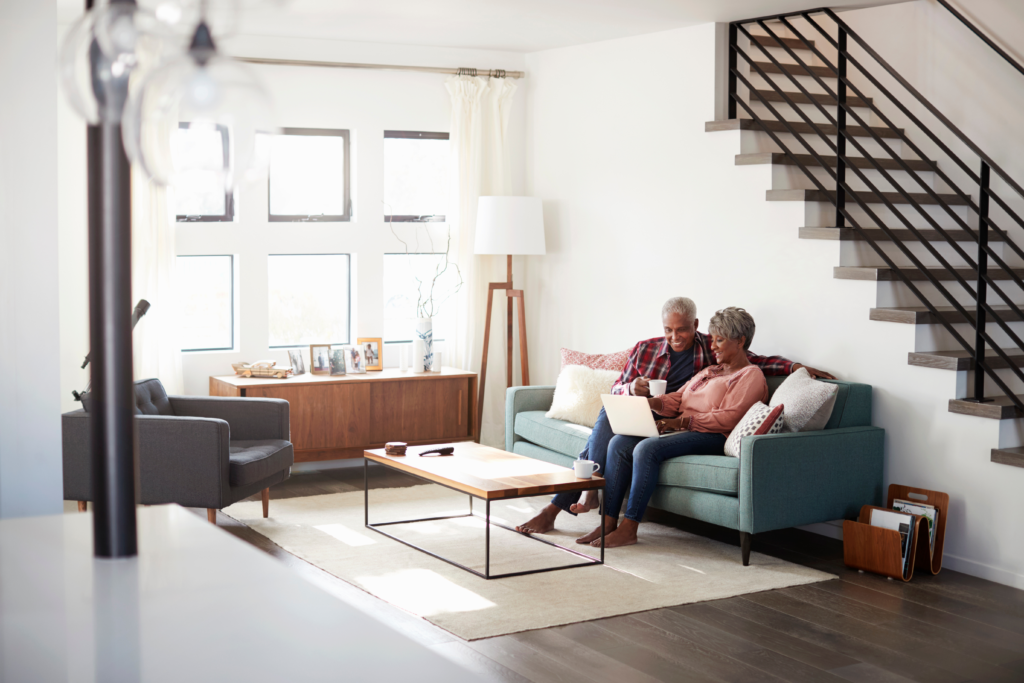From basic amenities such as food and shelter to more specialized services and activities, senior living facilities provide their residents with care, community, and dignity in their golden years. And it’s these specialized services that make assisted living facilities such a unique business mode.
On the one hand, senior residences are communities (much like multifamily buildings) where occupancy rates remain relatively stable. On the other hand, they also operate similarly to hotels or student housing, where operators offer a range of additional value-added amenities (such as medical care, social services, common areas, and recreational activities).
Of course, with these range of services and amenities comes additional overhead costs, and the more that senior residence operators can reduce the cost of providing those amenities, the more profitable they will be. And one aspect of overhead that all these amenities share is energy costs. Fortunately, there are a number of energy management best practices that senior residence managers can employ to reduce their overhead costs without compromising on resident comfort and experience.
Smart Energy Infrastructure
Since senior residences can’t cut back on amenities and services to reduce their energy consumption and costs, they instead rely on smart energy infrastructure to reinvent how they operate. This infrastructure ranges from software to hardware, and helps senior residence managers curb energy consumption without compromising the quality resident experience and care.
Demand Response
The first way many senior living facilities are reducing energy costs not only doesn’t require any upfront investment or installation, but actually allows senior resident managers to generate revenue from the energy they don’t use. Specifically, Demand Response Programs allow senior residence operators to receive credits against their energy bill whenever they choose to curb their consumption during peak demand times.
Demand Response Programs typically operate on an opt-in basis, and allow senior residences to ensure they have access to whatever energy supply they need to maintain their services and amenities at any given moment. Essentially, as a member of a Demand Response Program, senior facility managers receive notifications prior to forecasted peak usage periods (referred to as an “events”), and unless they opt-out of that event, their various smart appliances (e.g. thermostats, water heaters, etc.) will adjust to draw less energy from the grid. In turn, senior residence managers can then sell that energy back into the grid, and that revenue can then be applied against their energy bills, reducing their overhead energy costs.
In other words, by shifting the operation of high-energy appliances, adjusting temperatures in common areas, or turning off-nonessential lighting, Demand Response Programs eliminate the need for additional power plants, prevent blackouts, reduce energy costs, and help stabilize the power grid.
Renewable Energy: Solar Panels
While selling unused energy back to the grid can help reduce energy costs, senior residence managers can also invest in infrastructure that allows them to draw less energy from the grid in the first place. Consequently, many senior residence operators are investing in more renewable and self-sufficient sources of energy.
Specifically, solar panels present two-fold opportunity for senior residences to reduce their energy costs: (1) to reduce the amount of energy that they pull from the mainstream power grid, and (2) to then sell any excess energy production back into the mainstream grid through their Demand Response Program. So not only can senior residence operators reduce their energy costs by reducing their energy consumption, but they can also generate additional revenue to subsidize those energy costs.
Smart Climate Control
Insofar as resident comfort and experience are paramount for any senior residence operator, climate control is a relatively fixed overhead cost. And there are a range of smart climate control technologies that senior residence managers can invest in to not only curb, but optimize their energy consumption.
Smart Thermostats

Smart thermostats are one of the most straightforward ways in which senior residence operators can curb energy consumption in both common areas and living quarters by adjusting room temperatures according to real time occupancy patterns.
For starters, smart thermostats can be pre-programmed to heat or cool a space at times according to expected occupancy. For instance, if a resident is typically not in their unit during regularly scheduled activities, their smart thermostats can be programmed to reduce energy consumption during those hours.
Furthermore, smart thermostats can be integrated alongside occupancy sensors and door/window sensors so that they can respond to occupancy patterns in real time. This ensures that any given space is only heated or cooled when occupied.
Of course, there are different smart thermostats for different types of properties. Specifically, while consumer-grade smart thermostats are suitable for single family units, larger commercial properties, such as senior living facilities, require commercial-grade smart thermostats that can manage multiple units as well as common areas. Verdant’s smart thermostats, for instance, support Demand Response in select regions, integrating with local utility company’s demand response program.
Smart HVAC Energy Management Systems
When it comes to optimizing climate control energy consumption, however, smart thermostats are just the tip of the energy cost reduction iceberg. Specifically, senior residence managers can also invest in smart HVAC energy management systems that serve as an extra layer of machine learning intelligence between their smart thermostats and the grid.
In fact, the energy cost savings from smart HVAC energy management systems are so significant that they have the lowest payback (or breakeven) period of all other energy management technologies. Indeed, some commercial property managers have reported recouping their investment in as little as 12 months. It’s no wonder, then, that smart HVAC energy management systems are already standard practice in the hotel industry, and have even been shown to increase the resale value of commercial properties.
Air Source Heat Pumps
Another smart climate control hardware technology upgrade that senior residence managers can invest in to reduce their energy consumption and costs is Air Source Heat Pumps (ASHPs). Much like solar panels supplement a facility’s energy consumption from the grid, ASHPs supplement climate zone temperatures by transferring heat or cold from one area to where it’s needed — further reducing HVAC runtimes, and ultimately reducing their energy consumption.
ASHPs can also be employed as energy efficient space heaters (or coolers) to help manage energy consumption in areas of a facility that are thermodynamically problematic — e.g. common areas that are either more poorly insulated or particularly high-traffic.
Smart Lighting Systems

When it comes to energy management, ‘keeping the lights on’ isn’t just a metaphor, but both an operational requirement and overhead cost. Consequently, senior residence managers should be invested in smart lighting systems that can reduce energy consumption in both common areas and individual units.
Smart lighting systems reduce energy usage by integrating with sensors to respond to both the time of day and real time occupancy patterns (similar to how smart HVAC systems do). They also provide staff and residents with a more safe and seamless experience as they enjoy both common areas and the privacy of their units.
Water Management
Whether it’s for private unit amenities, food service, recreational facilities, laundry, sanitation, or landscaping, water is an essential resource for any senior facility operation. It’s no surprise, then, that senior residence managers can reduce their energy costs through smart water management technologies.
In fact, McGraw-Hill Construction estimates that implementing smart water management systems can reduce water consumption by 15%, energy use by 10%, and overall operating costs by 11%. In other words, not only do senior residence managers who implement smart water management reduce their carbon footprint, but end up using much less energy to manage that water, reducing their operational overhead costs.
The savings through smart water management, moreover, are not limited only to energy costs. For example, a single leaky toilet can cost as much as $840/year. Add to that the costs of any subsequent water damage, and it’s obvious just how quickly unmanaged water consumption can lead to inflated overhead costs.
Predictive Maintenance Insights
Maintenance costs can be financially disruptive for senior residence managers. After all, when missed or outright overlooked, maintenance needs can lead not only to negative resident experiences, but wasteful energy consumption and catastrophic repair costs down the line.
Similar to how smart energy management systems allow property managers to monitor, track, and optimize energy consumption, predictive maintenance makes it possible to leverage sensor data to identify wasteful or hazardous trends, and then alert maintenance staff before a given issue escalates into a much more costly one.
For instance, if an HVAC system isn’t performing within expected or required parameters, a smart energy management system can alert maintenance staff so that the malfunction can be addressed with minimal disruption to resident experience. In other words, the problem gets solved before residents notice it, and the facility operators avoid incurring both wasteful energy consumption and exorbitant repair costs further down the line. It’s worth noting, moreover, that senior resident operators can also use sensor data to create maintenance schedules based on real-time usage data — instead of an ad hoc guesstimate maintenance schedule.
The Benefits of Energy Efficiency in Senior Communities

Energy consumption represents not only a significant cost-center for senior communities, but also the greatest part of their carbon footprint. Fortunately, these energy management best practices can help reduce overhead costs, all-while maintaining resident comfort and satisfaction.
Improved Comfort
The first obvious benefit of energy efficient senior communities is improved guest comfort. In fact, with a centralized energy management system in place, senior residence managers can adapt to real-time occupancy patterns, delivering a consistent and cozy environment, optimizing temperature control and air quality.
Centralized energy management systems are responsible for maintaining optimal lighting, temperature, and heating, ensuring resident comfort all-year round, regardless of weather conditions. Verdant’s Starter Kit comes equipped with everything you need to automate energy savings in your senior living residence, enhancing guest comfort.
Lower Energy Bills
Simply put, energy-efficient senior living residences result in reduced energy consumption, which, in turn, leads to lower utility bills for the entire community and individual residents alike. Energy management systems such as Verdant Plus, typically come with demand response integration, allowing senior resident managers to generate revenue from energy they don’t use, and are designed to continuously optimize energy efficiency in real-time.
Senior residence managers can, in turn, directly address heating, cooling, and lighting needs of their residents in real time. The end result is increased energy efficiency, comfort, and cost-effectiveness for a more sustainable senior residence.
Enhanced Indoor Air Quality
Energy management systems also play a pivotal role in enhancing indoor air quality in senior residence living options. Notably, assisted living facilities that feature smart HVAC systems and sensor networks, offer senior residence property managers the ability to optimize and manage temperature, humidity, and ventilation control, as well as schedule regular maintenance. By removing pollutants and allergens from the air, these smart HVAC systems reduce the risk of long-term respiratory issues, resulting in a healthier senior living environment.
Environmental Impact
Environmental concerns remain a crucial consideration in senior residence management. Indeed, centralized energy management systems play a pivotal role in reducing greenhouse gas emissions and carbon footprint.
Eco-friendly practices, including energy-efficient lighting, heating, and cooling systems, not only help senior housing operators reach their ESG targets, but contribute to a more sustainable assisted living arrangement. In other words, embracing energy efficiency helps foster a greener future for current and future generations, without compromising resident comfort or experience.
Long-Term Cost Savings
Senior housing operators are often tasked with improving their property’s bottom line, maximizing long-term revenue and ROI. Naturally, energy efficiency is central to these considerations, representing a significant overhead cost.
A centralized energy management system, featuring smart thermostats and a smart HVAC system, has a measurable impact on profit margins, eliminating superfluous energy consumption. Indeed, initial investment in energy-efficient solutions proves cost-effective in the long run, which can in turn, lead to enhanced resident services and amenities, including common area improvements.
Types of Senior Living Facilities

Different types of senior living facilities have different energy infrastructures, but all of them are still communal living facilities, and can benefit from energy management best practices and tips.
Assisted Living
Put simply, assisted living communities offer senior citizens a blend of housing and personalized care services, including help with daily activities, as well as a number of opportunities to socialize with new friends, family, and staff, combating isolation.
Assisted living communities cater to older adults that require assistance, but are not in need of intensive medical care. Assistance typically includes help bathing, dressing and medication management all-while maintaining the residents’ independence.
Independent Living
Independent living is yet another senior residence option designed for active and self-sufficient adults, typically over the age of 55. Independent living options usually feature a range of amenities, including meals, housekeeping, and daily recreational activities, allowing senior residents to socialize with their peers hassle-free.
This senior residence living option is especially convenient as it eliminates the burden of home maintenance and encourages residents to live a healthy and active lifestyle within a vibrant community. Senior housing options vary from apartment and condo-style living to single-family homes.
Residential Care Homes
Residential care homes, also commonly referred to as residential care facilities, are typically privately-operated senior living options, housing 20 or fewer senior residents at a time. Residential care homes are designed to offer a more intimate setting for individuals requiring daily assistance and feature around-the-clock support staff.
In many instances, single-family units in suburban neighborhoods are converted into multifamily homes and are, in turn, adapted to the needs of senior living residents. Residential care homes are ultimately ideal for senior residents looking for a cozy, community-oriented environment.
Respite Services
Respite services is a senior living option that provides short-term relief for primary caregivers. In other words, these services offer residents the ability to immerse themselves in the senior living community, while enabling primary caregivers, typically family members, a much-needed break.
Indeed, caring for seniors can be a 24-hour job and is highly-demanding. Respite care ensures seniors receive the daily care and support they need, as well as promote active social engagement.
Memory Care
Memory care is a specialized senior residence living option, specifically for seniors suffering from Alzheimer’s disease and other forms of dementia. Memory care senior living options offer residents a safe and secure environment, emphasizing structured daily routines and activities, regular cognitive stimulation, as well as personalized care.
Indeed, this senior living option features trained staff that understand the unique needs of senior residents facing memory challenges.
Skilled Nursing Facility
A skilled nursing facility, while often confused with nursing homes, is vastly different. For one, skilled nursing facilities are designed to provide 24-hour medical care for senior residents with complex health needs, as well as those recovering from surgery or illness.
This senior living option prioritizes short-term recovery, featuring licensed healthcare professionals with experience in specialized care and rehabilitation services. Nursing homes, by contrast, offer a permanent residence for seniors looking for 24/7 care.
Retirement Community
Last but certainly not least, a retirement community is simply a residential community or housing arrangement for seniors that can largely take care of themselves. Retirement communities typically feature a variety of activities and amenities, including fitness programs, communal dining, and cultural events, ensuring an inclusive and vibrant environment.
Retirement communities provide some much-needed flexibility to residents, accommodating their evolving needs – whether that means an independent or assisted living arrangement within the senior residence.
Senior Residence Energy Management
Senior residence operators must balance a number of moving parents to operate effectively and profitably all-while delivering comfortably resident experiences. Much like hotels and student housing facilities, senior residence living facilities offer a range of value-added services and are unable to compromise on energy costs to improve profitability.
Fortunately, senior residence operators can turn to tried-and-tested energy management best practices to reduce energy consumption and even create new revenue streams. Whether that means smart HVAC and lighting systems to Demand Response Programs, smart water management, and Predictive Maintenance, senior residence operators are turning to energy management systems to reduce overhead costs, improve resident experience, and finally, improve overall financial performance.
Unlock Energy Savings at Your Property with Verdant!
Are you looking to make your property more energy-efficient and cut down on utility bills? Discover how our innovative solutions can help you achieve significant energy savings.

